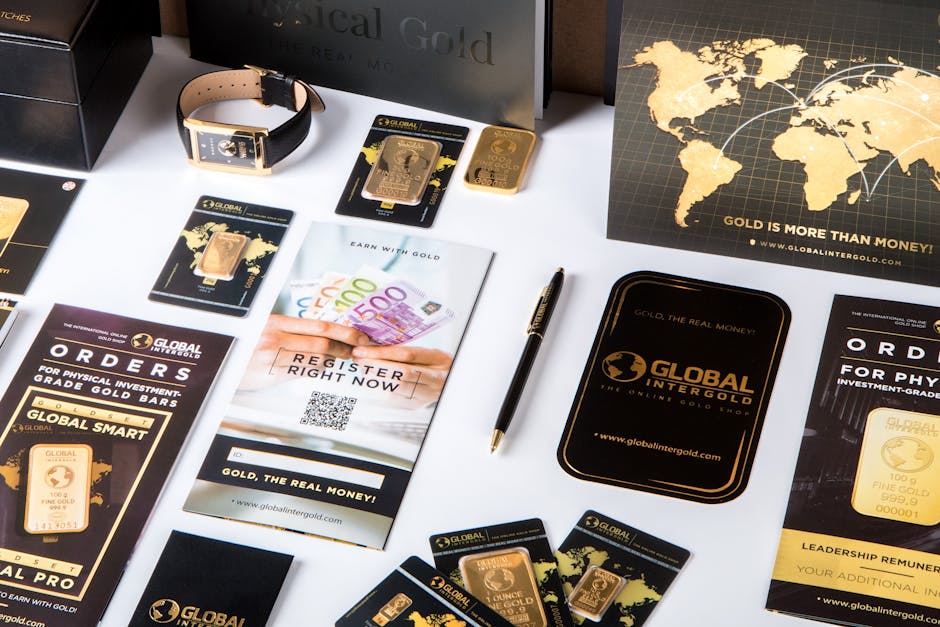Hey there! So, it’s 2025 now, and you might think emails are kind of old news, right? Like, with all the fancy social media and video stuff going around, who even looks at emails anymore? Well, turns out, loads of people still do. It’s actually pretty wild how much good an email can do for your business, still. It’s a direct way to talk to people who, you know, already said they want to hear from you. Which, when you really consider it, is a big deal in the grand scheme of things.
A lot of businesses, they just send out emails that are, like, super stiff or just trying to sell, sell, sell. And that normally doesn’t work out very well. People usually just skip past those or send them straight to the junk folder. The trick, and it’s something many just forget, is to make your emails feel like they’re coming from a real person, talking to another real person. It’s more about building a sort of relationship, you see. That connection, some people might say, is what really gets people interested in what you have going on.
This whole thing, writing marketing emails that people actually like, it is a skill that you can certainly get better at. It’s not some kind of secret formula only a few people know. It needs a little bit of thinking, a touch of planning, and sometimes, well, just trying different things to see what sticks. We’re going to go through some ways to make your emails more, shall we say, human-like. So they stand out in a world full of digital noise. That’s the idea anyway, keep people reading.
Getting Ready to Send Something Out
Before you even start typing out a single word, it’s pretty important, maybe even really important, to have a good idea of what you are actually trying to achieve. Just sending an email for the sake of sending an email, that generally isn’t going to get you anywhere good. You need to think about a couple of key things before your fingers hit the keyboard, you know, just to be prepared.
First off, who exactly are you trying to talk to with this email? Is it your most loyal customers, the ones who buy from you all the time? Or is it new people who maybe just signed up for your list and don’t really know much about you yet? The language you use and the stuff you talk about will be different depending on who’s getting it. A message for new folks probably shouldn’t be too specific or full of jargon.
Then, what do you want them to do once they’ve read your email? Are you hoping they’ll click on a link to check out your new things? Maybe you want them to sign up for an event or just read a blog post? Having a clear goal, just one main goal typically, for each email is pretty helpful. It helps you keep your message focused and not all over the place, which is something easy to do.
Also, it’s a good idea to think about your main point, your angle. What’s the big idea you want them to take away? What makes this email special or useful for them? If you can figure that out first, the rest of the writing part usually becomes, you know, a bit easier. It’s like having a map before you start driving somewhere new.
Making Your Emails Catch Someone’s Eye
Okay, so you’ve done your thinking; you know who, what, and why. Now comes the part where you actually have to get people to open your email in the first place. Because if they don’t open it, all that good stuff inside, well, it doesn’t really matter then, does it? There are a few small things that make a big difference here.
The subject line is probably the most important bit, arguably. It’s that short phrase that shows up in their inbox, normally right next to your name. This little line has to be good enough to make someone pause and click. Don’t be boring. Try to be a little bit curious, or make them think they might miss out on something if they don’t open it. Sometimes a question works, or even something a bit funny. Just don’t make it misleading; that’s a quick way to lose trust, which is really bad for you.
And your “from” name? That’s important too. People usually want to see a name they recognize. So, something like “Your Company Name Team” or “Jane from Your Company Name” works better than just a random email address. It gives it a more personal touch, like a person is sending it, not just a robot. This makes a difference for people often.
Then there’s the preheader text. This is that little bit of text, normally a small sentence or so, that appears right after the subject line in most inboxes. Many people totally forget about this, but it’s a good spot to add a little more information or a hook. Think of it as a second chance to get their attention, a sort of extra line to make them curious, which sometimes helps a lot. It is something often overlooked by many.
What Goes Inside the Email Itself
Alright, they opened it! Good job. Now you actually have to deliver on the promise you made with your subject line. This is where the meat of your message goes. And again, the goal is to sound human, friendly, and helpful, not like some big corporate entity just shouting at them.
Start with an opening that makes sense for who you’re talking to. You can just get straight to the point if it’s a deal you’re announcing. Or, you could start with a quick story, a question, or even a small personal comment if that fits your brand. Just try to make it something that grabs them right away and makes them want to keep reading past the first couple of sentences. It should feel like a chat.
The main part of your email, the body, needs to be easy to read. Break up big blocks of text into smaller paragraphs, usually just a few sentences long. Use bullet points sometimes if you have a list of things to share. This makes it so much easier for people to skim through and still get the main ideas, which they often do. Tell your story, explain your thing, but don’t drone on and on. Nobody has that kind of time normally.
Now, the call to action, or CTA. This is what you want them to do. Make it super clear. Use a button that stands out, or a link that’s obvious. Tell them exactly what will happen when they click. Something like “Shop Our New Collection” or “Sign Up for the Webinar Here.” Don’t make them guess. One main CTA is generally best, so they don’t get confused about what step to take next. It really is an important part.
Don’t forget about images, too. A nice picture or a GIF can sometimes really help break up the text and make your email more interesting to look at. But don’t go overboard with too many pictures or huge files that take forever to load. Simple and clean is usually the way to go here. Also, using their name, like “Hi [First Name],” can sometimes make it feel a bit more personal, which is nice.
After You Hit the Send Button, What Then?
So, you’ve sent your email out into the digital ether. Your work isn’t totally finished just yet, though. What happens after people get your email is also a really important part of the whole process. There’s stuff you can look at and do to make your next emails even better. It’s kind of an ongoing learning process, you could say.
You need to actually look at how your emails are doing. Are people opening them? Are they clicking on your links? Most email systems will give you numbers for things like open rates and click-through rates. These numbers, while just numbers, can tell you a lot about what’s working and what’s maybe not so much. If your open rates are low, maybe your subject lines need some work. If clicks are low, perhaps your message isn’t clear or interesting enough. This is something worth checking.
Also, it’s a smart idea to test different things. This is called A/B testing or sometimes split testing. You might send one version of your email with one subject line to a small group and another version with a different subject line to another small group. See which one does better. You can do this with subject lines, different pictures, or even different calls to action. It’s how you figure out what your specific audience responds to, which is pretty neat.
Timing is something else to think about. When do your people typically check their emails? Is it in the morning, during lunch, or maybe in the evening? There are general rules, but your own audience might be different. Watching your stats can sometimes help you figure out the best times to send your stuff, which some consider to be a big factor in success. It’s worth checking out, honestly.
And, every now and then, it’s good to clean up your email list. Get rid of people who never open your emails or seem to have stopped using that address. A smaller, more engaged list is usually better than a huge list full of people who just don’t care. It also helps your emails actually get delivered and not go straight to the spam folder, something everyone wants to avoid.
Putting It All Together: A Few More Thoughts
Writing good marketing emails for 2025 isn’t some super high-tech, mind-bending activity. It’s more about being thoughtful and remembering there’s a person on the other end reading your message. The digital world can feel a bit cold sometimes, but your emails don’t have to be like that. Making them warm and, dare I say, friendly, just makes sense.
Always, always try to keep it real. If your brand has a certain voice, use it in your emails. If you’re a bit quirky, let that show. If you’re more serious, that’s fine too. But avoid sounding like a robot or someone just trying to trick people. Authenticity, as some people like to say, really does go a long way when you’re trying to build trust with customers.
Also, remember the technical stuff that sometimes gets overlooked. Make sure your emails look good on phones. Most people, these days, are checking their emails on their mobile devices, you know. If your email looks all messed up on a small screen, they’re probably just going to close it and move on, which is a wasted effort, basically. So test it, always test how it looks on different devices.
And finally, don’t get too hung up on perfection. You won’t write the best email ever on your first try, or even your hundredth. It’s an ongoing thing, a learning process where you just keep trying and adjusting. The goal is connection and communication, and that happens best when you’re just being yourself, or at least your brand’s self, in your messages.
—
FAQ: How to Write Marketing Emails
How do I make my marketing emails not sound like spam?
To avoid sounding like spam, generally, you should use clear and honest subject lines. Avoid ALL CAPS and too many exclamation points. Focus on providing real value to your readers, instead of just pushing sales all the time. Make it easy for people to unsubscribe, which helps with trust, surprisingly.
What’s the best length for a marketing email?
Typically, the best length for a marketing email is usually pretty short and to the point. People are busy, they don’t normally have ages to read long emails. Aim for paragraphs that are just a few sentences. Get your main message across quickly. If you have lots to say, link to a blog post or another page.
Should I use emojis in my subject lines?
Using emojis in subject lines can sometimes make your emails stand out in a crowded inbox. But, it’s something you should use sparingly and always make sure it fits your brand’s style. Some audiences might like them, others might find it less professional. So it’s worth testing to see what your people like.
How often should I send marketing emails?
The right frequency for sending marketing emails really does depend on your audience and what you’re doing. Some businesses send daily, others weekly or monthly. The main thing is to send often enough to stay in people’s minds, but not so often that you annoy them or they feel bombarded. Keep an eye on unsubscribe rates as a guide.
What is a good click-through rate for marketing emails?
A “good” click-through rate (CTR) for marketing emails can really vary by industry and the type of email you’re sending. Generally, anything from 2% to 5% is considered a pretty decent result. Some specific, highly targeted emails might do even better. The key is to keep working to improve your own rates over time.










